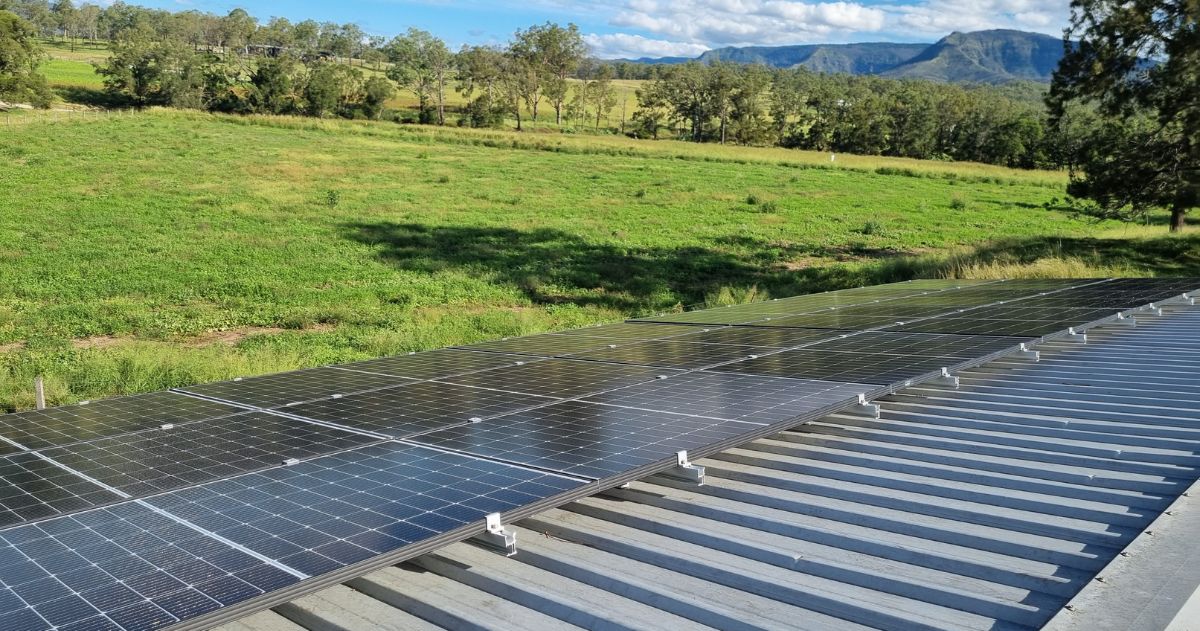Although most tin or tile roofs are suitable for installing solar, there are some styles of roof which will cost more or are even illegal to install solar onto. Below we look at some of the types of roof materials commonly found on Australian homes, and whether they are suitable for a solar installation.
Rusty or unstable tin
Rusty tin roofs are likely to sustain damage from installers standing on them, screwing in racking, or the weight of panels. Depending on the roof’s condition, it’s sometimes best to have a professional roofing contractor check if it’s stable enough for a solar installation, and advise on whether the roof should be replaced first.
Terracotta and Brittle or Old Tiles
Brittle or old tiles on a roof may run the risk of breaking or falling off during an installation, although newer tile roofs also risk damage due to their structure, brittleness, and fragility. Depending on the state of the tiles, you may need to have a roofer fix them after the installation. Your installer will discuss with you whether this cost will be covered by you or by them, depending on the cause of the damage and the sensitivity of the tiles.
Flat or Klip Lock Roofs
Primarily used for commercial premises, flat or Klip Lock roofs offer ease of installation for solar installers. The flat surface makes roof work easier, and mounting brackets can grip the ribs in the roof sheets. The only difference from a standard angled roof is that the flat surface may require tilt frames to get the optimal solar efficiency for your system.
At Proven Energy, we have installed thousands of systems on tile. A professional can assess and look after your roof.
Decramastic tiles
These pressed metal tiles (also known as Decrabond) were popular in the 70s and 80s. They were made of aluminium or galvanised steel, and featured either a painted finish or a bitumen coating to allow a stone finish. Decramastic tiles can usually be identified by the fact there is no separation between the tiles horizontally or vertically.
When installing solar, these tiles can easily be dented or damaged, causing leakage and structural issues. They may also have an asbestos finish. The CEC states that accredited solar installers cannot install solar panels onto this type of roofing.
Timber tile roofs
A timber roof is generally not recommended for solar installations, as the timber is fragile and can easily crumble during installation, and it is also a fire hazard with solar attached. That said, solar can be installed onto a wooden roof, but a lot of care needs to be taken by the installer to ensure a safe installation and minimal damage to the wood.
This is a very rare roofing material in Australia, and one we’ve never seen during our decade of installing solar panels.
Sandwich panel
Typically used for pergolas, this type of roofing can be very sensitive to weight. Although there are options for transferring the weight and force of the system directly into the roof’s substructure, we generally don’t recommend installing onto these roof types.
It can be done, with the right attachment bracket and permission from the roof supply. So if you plan to install solar, you need their details and the model and style of your roof material.
So, what roof is best for installing solar?
The best roofs are in good condition, and usually tin, or as a secondary option, tile. Although most roofs are suitable for solar installation, some types will cost more money in preparation or repairs, which can lower the return on investment of your new system, and in some cases, increase the risk of damage to your roof in the long term.
The best option is to have a solar estimator or CEC Qualified Installer check your roof in person, so they can provide the best advice on the quality of your roof and the risks associated with installing solar.
If installing on a house roof is not an option, many people also choose to install solar onto their detached shed or invest in a ground mount system. A newer option that’s recently begun in Australia for people who cannot install solar on their own property, is a solar garden. This allows people to purchase one or more solar panels as part of a larger solar farm, to offset their electricity bills.
If you’re planning on installing solar of any type onto your roof, the most important first step is talking to a qualified installer. That way, you can find out what will work, what’s safe, and what your next steps are.

